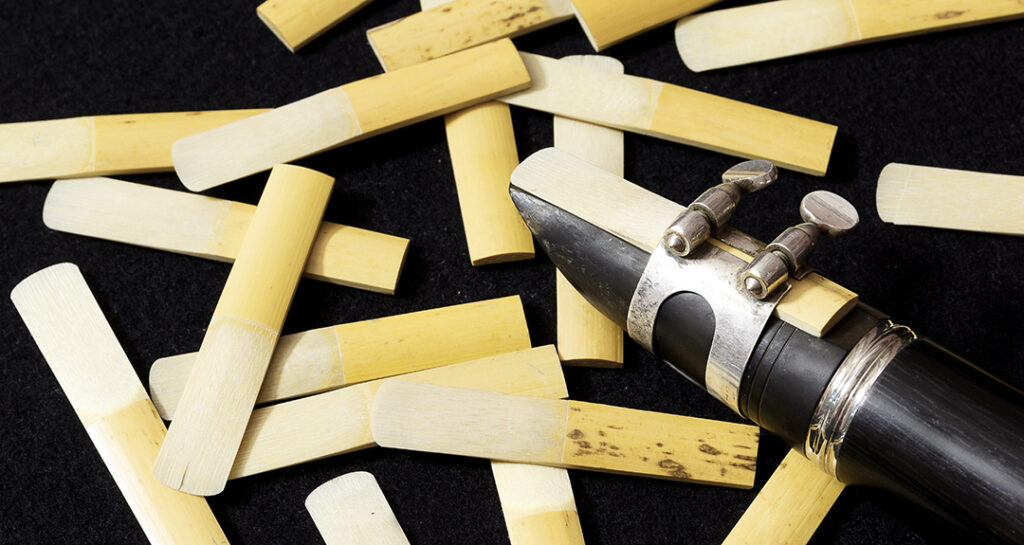Ever wonder what the reed in a reed instrument actually does? After all, musicians blow into other instruments to create sound – flutes and brass instruments come to mind first – that don’t use reeds. So what makes reed instruments different?
First things first
First, if you’re not sure what a reed is, it’s a thin piece of material that vibrates when you blow air past it, causing the air travelling through the instrument to vibrate, too. The length and shape of the instrument affect the vibrations and cause the different notes we hear. Covering or uncovering the holes in the instrument accomplishes the same thing by controlling how much vibrating air is trapped in the instrument.
Are two reeds better than one?
Well, an oboist or a bassoonist would probably say yes, but the clarinetists and saxophonists would undoubtedly disagree. (It’s probably better not to press the issue.) The truth is that it’s all about vibration, and that can happen several different ways. Most commonly, a reed is affixed to a solid mouthpiece, and it then vibrates against the mouthpiece. That’s the case with the different varieties of clarinet and saxophone. With double-reed instruments, namely the oboe and bassoon, there are two reeds connected at the bottom that vibrate against each other to create sound.
How reeds are made
Originally reeds were made from – spoiler alert! – reed plants. Today’s reeds look like they’re made out of bamboo, but they’re actually created from a plant in the grass family commonly known as “giant cane.”
Reeds are graded by number, with higher numbers indicating more strength and hardness. Harder reeds are more difficult for the musician but lead to better sound quality. However, even when reeds are the same hardness, no two are exactly alike. Musicians “break in” their reeds, often trimming or sanding them to get the perfect fit and flexibility.
Do reeds need to be wet to work?
It’s not so much that they need to be wet … the fact is, they are going to get wet, because the musician is blowing moist air past them. To keep the instrument’s sound from changing as the reed absorbs moisture, players of reed instruments just go ahead and wet the reeds before they sound the first note.
Now you understand how reed instruments work. However, the real fun is in listening to the lovely sounds created by musicians who have spent decades perfecting their craft. Enjoy the following two performances with only reed instruments:

